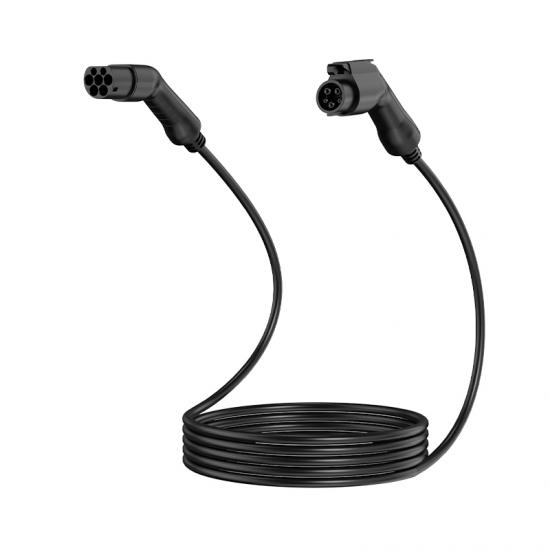As a manufacturer of high-quality electric vehicle charging cables, we understand that safety is the top priority for both consumers and manufacturers. Charging an electric vehicle (EV) may seem straightforward, but the system involves a complex interaction between the vehicle, charger, and charging cable. At our company, we have carefully engineered our products to eliminate any safety risks, ensuring that our cables are safe, reliable, and adaptable to all charging environments.
Overload Protection
One of the most common concerns when it comes to EV charging is the risk of overloading, which can lead to overheating, component damage, or even fires. Our electric vehicle charging cables are designed with built-in overload protection to prevent these risks. This feature automatically detects when the charging system is drawing more power than it can safely handle. When overload is detected, the system automatically shuts off the power, protecting both the vehicle and the charging station from any damage. Whether you're using a mobile electric vehicle charger or charging with high-power systems, our cables ensure that you never face an overload situation.
Temperature Control and Overheating Prevention
Overheating is another major safety issue that can arise during the charging process, especially when high-power chargers like the three-phase electric vehicle charging systems are used. To address this, our charging cables are constructed with advanced heat-resistant materials and temperature control features that prevent overheating. These cables are equipped with temperature sensors that continuously monitor the charging process, ensuring that the cable and charger stay within safe operating temperatures. If temperatures rise too high, the system will automatically shut off, preventing any potential hazards.
Waterproof and Weatherproof Designs
Charging your EV outdoors is becoming more common, but exposure to rain, snow, or high humidity can pose risks if your equipment isn’t properly protected. At our company, we’ve designed our cables to be waterproof and weatherproof, ensuring that they can withstand extreme weather conditions without compromising safety. Our cables feature high IP ratings (IP67, IP68), which means they’re fully protected against dust and water, even in cases of submersion. Whether you're using a fast Tesla charger for home in your garage or an outdoor charging station, you can rest assured that our cables will perform safely in any environment.
Shock Protection
When dealing with high electrical currents, shock protection is crucial. That’s why our electric vehicle charging cables are insulated with shock-resistant materials to protect users from potential electrical shocks. Additionally, our cables are equipped with earth leakage protection, which redirects any stray electrical current, eliminating the risk of electrocution. Whether you’re charging your EV in a commercial setting or at home, our cables are built to keep you safe from electrical hazards.
Certified Safety Standards
Safety is not just about features; it’s also about quality assurance. All of our electric vehicle charging cables are certified by leading global organizations such as UL, CE, and TÜV. These certifications confirm that our products have passed stringent safety tests, ensuring they meet the highest standards for performance, durability, and safety. When you choose our cables, you can be confident that you’re using a product that adheres to all safety regulations and is built to perform reliably.
At our company, safety is embedded in the design and manufacturing of every electric vehicle charging cable we produce. With features like overload protection, temperature control, shock protection, waterproofing, and certified safety standards, we’ve taken every measure to ensure that our products are free from safety risks and ready to perform in any environment. Whether you’re using a fast Tesla charger for home, a mobile electric vehicle charger , or a three-phase electric vehicle charging system, you can trust that our cables provide safe, reliable, and hassle-free charging every time.
As a manufacturer of electric vehicle charging cables, we are committed to delivering products that provide not only the highest level of performance but also maximum safety. Reach out to us today to learn more about how our products can help you safely power your electric vehicle.



